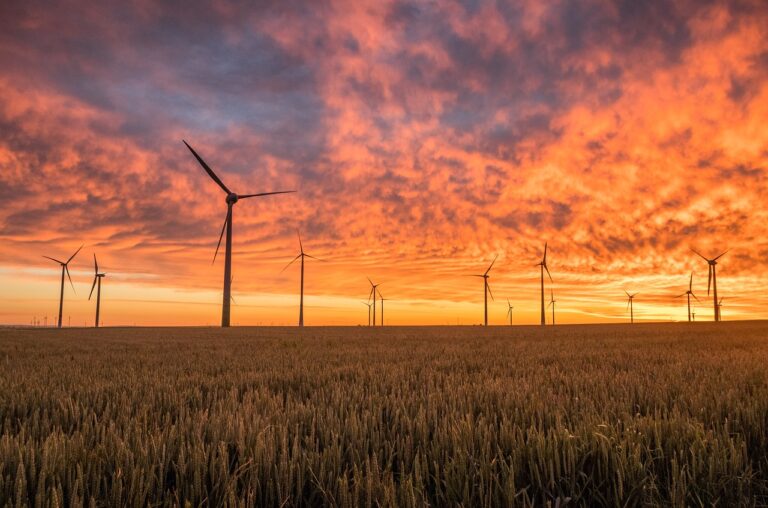In the coming decades, it will almost certainly require a large number of countries to take action in order to meet their climate change goals, improve air quality and reduce energy costs.
That’s why we’ve compiled a list of the top six countries leading the renewable energy transition.
Table of Contents
Top countries leading the renewable energy transition
1. Countries leading the renewable energy transition: Sweden
Sweden is the first country in the world to generate more electricity from renewable energy than from fossil fuels. In fact, Sweden has been generating so much clean energy that it exports surplus power to other countries.
The country has a target of 100% renewable energy for all energy by 2040. The government recently announced plans for seven new nuclear reactors and is also considering a carbon tax (the first in Europe).
However, many people are concerned about nuclear power as well as fossil fuel use due to rising global temperatures and other climate-related issues.
Sweden also has the highest per capita number of electric vehicles in the world!
2. Countries leading the renewable energy transition: Costa Rica
Costa Rica is a small, mountainous country that has made headlines for its commitment to renewable energy. How did it do it? Well, the answer is pretty straightforward: through government policy and private sector investment—and also by being in an advantageous geographic location.
In terms of government policy, Costa Rica has been promoting investments in renewable energy since 2005 when one of its presidents introduced a tax reduction scheme for citizens who installed solar panels at home.
This helped boost the number of solar panel installations from 3,000 in 2006 to more than 200,000 today (as well as encouraging other types of renewable energy sources).
3. Scotland
Scotland is the second largest producer of renewable energy in Europe and has the most installed wind capacity. In fact, it has almost twice as much installed wind capacity as Denmark, which has the next biggest amount.
Scotland’s energy use is also very low compared to other countries around the world. It uses about 1% of its available land for renewable energy development—compared with 20% in Germany and 30% in Spain.
Wind power accounts for approximately 60% of Scotland’s total electricity generation. This is 3 times more than any other European country.
4. Germany
Germany is one of the world’s leaders in renewable energy, boasting the most installed wind power capacity and the largest solar market.
The country has also made major gains in its hydroelectric generation capacity, which is thought to be around over 45 gigawatts by 2022.
5. Denmark
Denmark’s green transition began with the oil crisis in the 1970s, and decades of development have resulted in Denmark being a frontrunner in wind and solar power – a position that is used to share experiences and assist other countries embarking on the same green journey.
In accordance with the Paris Agreement, Denmark has pledged to achieve net-zero emissions by 2050. Furthermore, the government has agreed to phase out all coal-fired electricity generation by 2030. Denmark’s net-zero commitments and advances in renewables position it as an energy transition leader. The country aims to reduce GHG emissions by 70% from 1990 levels by 2030, with renewables accounting for at least half of total energy consumption by that time.
In addition, the country has a political agreement in place that calls for renewable energy to cover 100% of electricity consumption and 55% of total consumption by 2030. Furthermore, by 2030, 90% of district heating will be generated from non-fossil fuels. The government also intends to phase out the sale of gasoline and diesel vehicles by 2030.
6. Uruguay
The country of Uruguay is a small nation located in South America, with a population at 3.5 million people. In spite of its size, Uruguay is the first country to achieve 100% renewable energy. Since 2013, it has been boasting that they are a net exporter of renewable energy and have reduced their CO2 emissions by 70%.
They’ve achieved this impressive feat through the use of wind power. However, they also rely on solar power as well as hydroelectricity (which is generated from waterfalls).
In order to encourage more people to use alternative sources of energy such as solar panels and wind turbines, they have set up large-scale incentives for those who do so.
Renewable energy is the future
As you can see, there are many reasons why renewable energy is the future. In fact, it’s already here. In just a few years, we’ve seen massive growth in solar panels and wind turbines as well as other sources of renewable energy.
Renewable electricity is often less expensive than fossil fuel-based electricity on an annual basis because it doesn’t require drilling or mining. Instead, renewables harness nature’s resources like wind or sunlight to generate power at a lower cost than traditional forms of electricity generation that rely on oil or gas exploration and production costs over time with no end date in sight (more on this later).
Each country has its own unique reason for wanting to lead the renewable energy transition, but they all share one thing in common. The desire to better protect their citizens and their natural resources. As more countries become aware of the dangers posed by fossil fuels, we expect this list will grow.
Read also: Which countries are the world’s big polluters, and their measures to curb emissions












